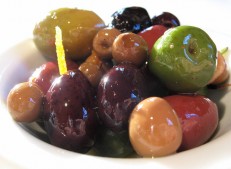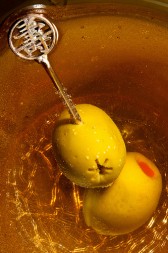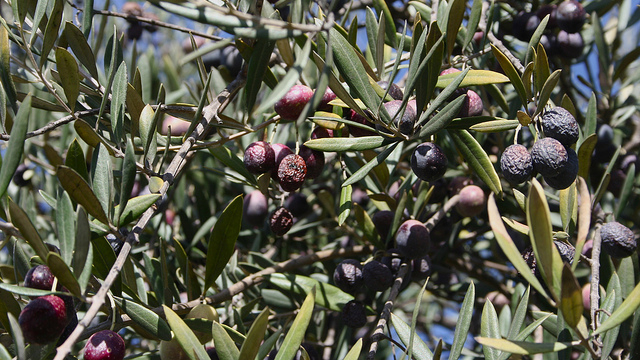"Reflect that I may be an acquired taste. You probably did not like olives the first time you tasted them. Now you probably do. Give me the same chance you would an olive."
--P.G. Wodehouse, Leave it to Psmith
I've always hated olives. I'd pick them off pizzas and out of salads. And as for eating one whole? Forget it! But in the last few weeks, I've actually started eating them on purpose. It could be because I'm pregnant, a condition which has me craving salt--and few foods are saltier than a nice olive.

Olives, of course, don't come off the tree salty. But they also don't come off the tree edible. Lye can leach out the raw olive's bitterness in just a few days, but it's not exactly flavorful, so the cured olives must be washed and transferred to brine. If you're willing to wait for weeks, you can also bypass the lye and just cure the olives in straight brine. Plain water and plain salt are other alternatives for patient olive-curers.
Curing, as I've learned, is only one of many factors that determine the nature of the final product. Do they pick the fruit unripe or ripe? It's not as obvious as you might think--some olives are ripe when green, and some unripe olives are made black by processing. Do they treat the olives with vinegar as well as brine? That's how to make kalamatas--which I still haven't warmed up to, despite my newfound affection for this 7000-year-old crop. No, I'm loyal. I love my California olives.

Olive trees were brought to California by Fransciscan missionaries in 1769; the Mediterranean climate must have reminded them of home, for they flourished. In fact, depending on which story you believe, California olives may have debuted in the original martini, named after the city of Martinez. I only mention this because yesterday was National Martini Day, if you're into that kind of thing. (For obvious reasons, I'm not.)

